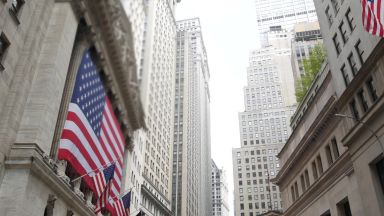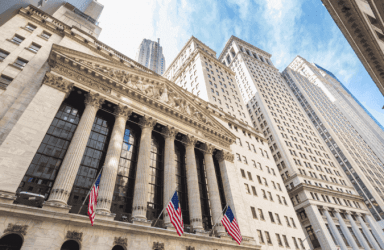US Wall Street 30
The US Wall Street 30, or US30, is our market based on the price of 30 high-performing companies listed on US stock exchanges. It enables you to trade on the price of the US Wall Street 30 stock index using CFDs or spread betting.
The US Wall Street 30, or US30, is a stock market index that measures the performance of 30 large publicly-listed companies on the United States stock exchanges.
Despite being the second-oldest stock market index in the US, the US Wall Street 30 is still considered to be one of the leading benchmarks of the country’s stock market. However, societal changes in recent years, coupled with criticisms of the methodology used to determine the index’s components, have led to suggestions that the US Wall Street 30 is no longer an accurate gauge of the market compared with other indices such as the US 500 or US Tech 100.
To practise trading the US Wall Street 30 and a range of other markets risk-free, you can open a demo account with us.
There are no specific criteria a company must meet to be eligible for inclusion in the US Wall Street 30, only that the company must be a large-cap, well-respected enterprise that demonstrates sustained growth and is of interest to a large number of investors. Companies are hand-picked by a committee of representatives from S&P Dow Jones Indices and The Wall Street Journal.
The US Wall Street 30 is price-weighted, meaning the stocks with the highest share price have a greater influence on the index price than lower-priced stocks. This is in opposition to the majority of other market indices which favour market capitalisation or industry size to weigh their constituents. As of April 2024, five of the largest companies in the US Wall Street 30 are Microsoft (MSFT), Apple (AAPL), Amazon (AMZN), JP Morgan Chase (JPM) and Visa (V).
Latest indices articles


FAQs
What is the US Wall Street 30?
The US Wall Street 30 is a stock market index that measures the performance of 30 large companies listed on stock exchanges in the United States. Established in 1896 by Charles Dow, it is one of the oldest and most widely followed equity indices in the world. The US Wall Street 30 is price-weighted, meaning that companies with higher stock prices have more influence on the index's performance. It serves as a barometer for the overall condition of the US stock market and the economy.
How do I trade the US Wall Street 30?
To trade on the price of the US Wall Street 30, you can use a financial derivative product like a CFD or spread bet. Capital.com offers accounts for both of these products.
CFDs and spread betting are derivative products, meaning that they derive their price from that of an underlying market. When you trade CFDs or spread bet, you’ll usually be trading on margin – giving you access to a larger position at a fraction of the trade’s true value.
This is known as trading with leverage, and can result in your losses and gains being much larger and faster than you might expect. So it’s important to understand the complexities of trading these products before you start – you can learn more with our CFD trading and spread betting guides.
How is the US Wall Street 30 doing today?
To check how the US Wall Street 30 is doing today, take a look at our US Wall Street 30 live chart at the top of this page.
When does the US Wall Street 30 open?
The US Wall Street 30 follows the New York Stock Exchange (NYSE) trading hours, which are from 9.30am to 4.00pm Eastern Time (ET) for the core trading session. There's also a pre-opening session starting at 6.30am ET, where orders can be entered and queued until the opening auction at 9.30 am ET.
You can trade the Capital.com US Wall Street 30 market outside of these hours – take a look at the market opening hours at the top of this page for more information.